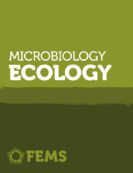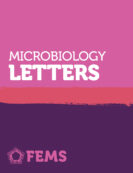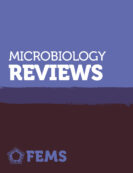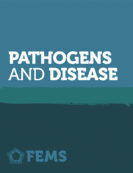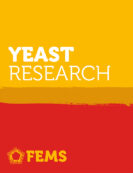FEMS Journals Oral Presentation Prize: Dušan Ušjak
FEMS Online Conference on Microbiology 2020
 We send our congratulations to Dušan Ušjak, who won the Oral Presentation Prize for Early Career Scientists at the FEMS Online Conference on Microbiology 2020, sponsored by the FEMS journals.
We send our congratulations to Dušan Ušjak, who won the Oral Presentation Prize for Early Career Scientists at the FEMS Online Conference on Microbiology 2020, sponsored by the FEMS journals.
The FEMS Online Conference on Microbiology took place between the 28th and 31st of October 2020 as a virtual conference. His winning presentation was titled “Synthetic 2-methoxy-2’-hydroxychalcone inhibits ompA gene expression in Acinetobacter baumannii hospital strains“.
Read our interview with Dušan about his research below:
What is your current position and what was your scientific journey to get there?
I am a fourth year PhD student and a Junior Research Assistant at the University of Belgrade. My scientific journey began in 2017 when I started my doctoral research at the Department of Microbiology and Immunology, Faculty of Pharmacy, under the supervision of Prof. Dr. Marina Milenković. The subject of my PhD thesis is to investigate antimicrobial susceptibility, biofilm production and virulence factors expression of multidrug resistant clinical strains of Acinetobacter baumannii, and to test antibacterial and antivirulence activities of synthetic chalcone derivatives against this highly problematic pathogen. Alarmingly, above 90% of nearly 50 isolates of A. baumannii that I collected from hospitals in Belgrade proved to be carbapenem resistant, desperately needing new therapeutic options. To cut a long story short, I had observed that several chalcones exhibit potent antibiofilm activity against these isolates, which then served as a turning point for my further research. Basically, now the idea is to investigate whether the selected chalcones could act as antivirulence agents, through the inhibition of biofilm production or biofilm-related virulence factors expression, attenuating the virulence of A. baumannii in this way and consequently reducing the risk of severe outcomes and deaths in infected hosts. Also, I have been exploring antimicrobial properties of some other agents, mainly essential oils and nanoparticles. My targets include other ESKAPE pathogens, besides A. baumannii, as well as different Candida species. In the field of nanotechnology, I already obtained several very promising results, regarding the synergistic interactions with some antibiotics and inhibition of polymicrobial biofilm production, yet to be published. I have published three articles so far, two of which are related to my PhD thesis.”
Could you describe the research your poster covered?
The research my poster covered is a part of my PhD thesis and it deals with the inhibition of key biofilm-associated virulence factors gene expression in A. baumannii under the influence of synthetic methoxy substituted hydroxychalcone. We selected this chalcone derivative based on the results of our previous study, in which we demonstrated that the addition of methoxy group to B-ring of hydroxychalcone basic structure strongly potentiate the antibiofilm effect against A. baumannii. Since the biofilm itself is not recognized as a virulence factor in A. baumannii, we explored literature for biofilm-associated virulence factors produced by this pathogen. Among several described, we chose to examine presumably the most important ones, such are outer membrane porin OmpA, biofilm-associated protein Bap and A. baumannii autoinducer synthase AbaI, a part of A. baumannii quorum-sensing system. Gene expression analysis, which we carried out at IMGGE (Institute of Molecular Genetics and Genetic Engineering, Belgrade, Serbia) institute, revealed that investigated chalcone significantly downregulates the expression of ompA in all tested A. baumannii strains. We find this particularly important, since the OmpA is considered as one of the main virulence factors in A. baumannii, involved in several virulence properties such as adhesion and invasion of human cells, cytotoxicity, immune evasion, resistance to antimicrobial agents etc. To further demonstrate the ompA-related antivirulence action, we tested influence of the investigated compound on virulence traits associated with ompA gene expression other than biofilm. We tested fibronectin- and collagen-mediated adhesion and surface motility, and indeed found notable reduction. As a matter of fact, motility of one strain was completely prevented. Altogether, the results indicate that this compound could act as a potent antivirulence agent against A. baumannii. We are now focused into development of appropriate animal models, so to investigate whether this chalcone can actually decrease the virulence of A. baumannii in vivo and prolong the survival of treated infected animals.”
What do you hope to focus your research on in the future?
As I mentioned, we plan to perform animal experiments. One of the ideas is to treat infected wounds in rodents. A. baumannii wound infections are known for being extremely hard to treat due to the poor penetration of active antibiotics into the site of infection, which could be at least partially because of the formation of highly recalcitrant biofilms. Taking into account interesting synergistic interactions of methoxy substituted hydroxychalcone with meropenem that we observed in vitro, we are planning to include this combination for wound treatment and hoping that the inhibition of biofilm production will enhance the penetration of meropenem to the infection site.
When it comes to long-term research, I plan to devote myself to the investigation of new therapeutic options against all kinds of resistant or emergent pathogens. However, due to my versatile interests, I would also be glad to work on some other promising and ambitious microbiological research projects, not necessarily related to the latter subject.”
–
We use income from the FEMS Journals to fund grants, awards, and projects, and to support our knowledge sharing events and initiatives. Consider publishing your research with our journals to help the global microbiology community.
All but one of the FEMS journals are fully open access (OA), with one journal, FEMS Microbiology Letters, offering free-to-publish and OA options. Open access is key to supporting the FEMS mission of disseminating high quality research as widely as possible: when high quality, peer reviewed sound science is open access, anyone, anywhere in the world with an internet connection, can read it.

